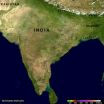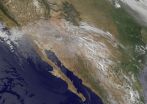(Press-News.org) SAN FRANCISCO--Seismologists studying the recent dramatic upswing in earthquakes triggered by human activity want to clear up a few common misconceptions about the trend.
There is increasing evidence that these earthquakes are caused by injecting fluids from oil and gas operations deep into the earth. These human-caused earthquakes are sometimes called "induced earthquakes."
A Seismological Research Letters focus section to be published online June 10 addresses some common misconceptions about induced seismicity--the biggest of which is that it is primarily related to oil and gas recovery by hydraulic fracturing or "fracking." The focus section will appear in the July/August print issue.
Guest editor Justin Rubinstein, a scientist with the U.S. Geological Survey, explains that most of the induced earthquakes felt in the United States are from the disposal of large amounts of wastewater from oil and gas production. The majority of this wastewater is ancient ocean brine that was trapped in rock layers along with gas and oil deposits. Only a small percentage of induced seismicity comes from fracking processes that inject liquid into the ground to break up rock layers to free oil and gas for recovery.
Wastewater disposal from oil and gas operations has increased in the U.S. in the past decade, especially in states like Oklahoma where the amount of wastewater disposal doubled between 1999 and 2013.
"Wastewater disposal is expanding and waste fluids are being injected into new locations. There have been changes in production practices as well, so in some areas there is much more wastewater that needs to be disposed," Rubinstein noted.
Not all fluid injection causes earthquakes that can be detected or felt, Rubinstein added. Only a few dozen of the tens of thousands of wastewater disposal, enhanced oil recovery and hydraulic fracture wells in the U.S. have been linked to induced earthquakes that can be felt.
The central United States has experienced a surge in seismicity in the past six years, rising from an average of 24 earthquakes magnitude 3.0 or larger per year between 1973 and 2008 to an average of 193 earthquakes of this size every year between 2009 and 2014, with 688 occurring in 2014 alone.
Researchers are also tracking induced earthquakes in Canada, and the current batch of studies suggests that fracking might be more significant than wastewater disposal for causing earthquakes in that country, according to focus section co-editor David Eaton of the University of Calgary.
"There appear to be interregional differences between the U.S. and Canada," he noted, "but it's too early to say yet whether those reflect operational differences in the geological site conditions, or if it simply reflects the focus of studies that have been completed to date."
As research continues in both countries, experts are recommending a more proactive approach to the risks of induced seismicity. A focus section article by Randi Jean Walters and colleagues at Stanford University outlines a possible workflow to reduce pre and post-injection risks at oil and gas sites. The workflow would incorporate seismic monitoring, a thorough understanding of a region's past and present geology and detailed information on the industrial methods used in an oil and gas operation. Perhaps most important, they write, an ongoing risk assessment would take into account what sorts of resources--from buildings to natural settings--would be affected by seismic activity, and what kinds of seismic activity the surrounding population is willing to tolerate.
Another focus section paper by James Dieterich and colleagues at the University of California, Riverside explores the mechanics of induced seismicity. Their study uses an earthquake simulation program called RSQSim to explore how simple faults with various levels of pre-existing stress respond to fluid injection. Their model is able to reproduce many of the observed characteristics of induced seismicity and relate them to physical quantities such as injection duration and injected volumes. If the simulator can model more complex situations in future trials, it may offer guidance on managing the seismic risks at injection sites and estimating the probabilities of inducing earthquakes.
Other articles in the issue investigate characteristics of induced earthquakes that have been proposed to be different in natural and induced earthquakes, including their ground shaking and faulting styles.
INFORMATION:
Scientists at the University of York have made a significant advance that could make cell-based treatments for arthritis less of a lottery.
Researchers in the Departments of Biology and Physics at York, working with colleagues at the Erasmus Medical Centre in Rotterdam, have identified individual stem cells that can regenerate tissue, cartilage and bone.
The stem cells are mixed within human bone marrow stromal cells (MSCs) but are similar in appearance and previously, scientists had difficulty in distinguishing between them. The York researchers isolated individual MSCs ...
An unexpected finding by an international team of scientists based at The University of Manchester and National Institutes of Health in America has shed new light on how immune cells are programmed to either repair or protect the body.
It's hoped the discovery will inform the development of better treatments for a range of conditions from inflammatory bowel diseases (IBD) to certain cancers.
The research, led by Dr John Grainger from the Manchester Collaborative Centre for Inflammation Research (MCCIR) and Dr Yasmine Belkaid from the National Institute of Allergy and ...
Large magnetic storms from the Sun, which affect technologies such as GPS and utility grids, could soon be predicted more than 24 hours in advance.
Coronal mass ejections (CMEs) are eruptions of gas and magnetised material from the Sun that have the potential to wreak havoc on satellites and Earth-bound technologies, disrupting radio transmissions and causing transformer blowouts and blackouts.
These mass ejections can cause problems with GPS technology - used by all kinds of vehicles, from cars to oil tankers to tractors. For example, they can affect the ability of ...
What:
The Makona strain of Ebola virus (EBOV) circulating in West Africa for the past year takes roughly two days longer to cause terminal disease in an animal model compared to the original 1976 Mayinga strain isolated in Central Africa, according to a new National Institutes of Health (NIH) report. The results provide important information to scientists who have wondered if the Ebola virus in West Africa is becoming more severe. In fact, the new study suggests the current virus has a decreased ability to cause disease in their animal model compared to the 1976 strain.
Using ...
This news release is available in Spanish.
CRG scientists describe a new mechanism shaping cells and generating cell contractile forces during development and organogenesis.
The new mechanism, which has been published today in the journal Developmental Cell, includes strategies shared with programmed cell death but which have not previously been directly associated with force generation.
Studying developmental processes such as the one presented in the Dev. Cell paper contributes to a better understanding of organ development and maintenance. Also, ...
Simple steps that include the consistent use of experienced medical teams for a single type of surgery, preemptive antibiotics before the procedure, less reliance on potent opioids during recovery and urging patients to get out of bed and move around sooner can not only prevent infections, blood clots and other serious complications in people undergoing colorectal operations, but can also accelerate recovery and reduce cost of care, according to results of an ongoing program at The Johns Hopkins Hospital.
The approach, dubbed Integrated Recovery Pathway, or IRP, and its ...
In a small clinical trial, scientists at Johns Hopkins' Kimmel Cancer Center and James Buchanan Brady Urological Institute found that men with advanced prostate cancer and detection of androgen receptor splice variant-7 (AR-V7) respond to chemotherapy just as well as men who lack the variant.
The findings, the researchers say, may be significant for patients who carry the AR-V7 variant, because they are more likely to develop resistance to one of two hormone drugs routinely used to treat their disease. Results of the trial are published online in the June 4 issue of JAMA ...
Young adults who use social media to quit smoking are twice as successful in their efforts as those who use a more traditional method, according to new research from the University of Waterloo.
The study, published last week in Nicotine & Tobacco Research, compared the success of the social media-based campaign Break It Off with Smokers' Helpline, a telephone hotline for young adults looking to quit smoking.
After three months in the program, 32 per cent of smokers who used Break It Off apps and web tools had quit smoking, compared to 14 per cent of their peers who ...
Monsoon rainfall, although a little later than normal, started on June 5, 2015, in southern India. The Global Precipitation Measurement (GPM) core satellite gathered rainfall data that was used to create an animation that shows where the precipitation fell as the season started.
Due to El Nino conditions some meteorologists predict that monsoon rainfall will be below normal this year. Cooling rainfall comes to the country after high temperatures preceding the monsoon have caused the reported deaths of more than 2,300 people.
Data from the NASA's Integrated Multi-satellitE ...
The remnants of former Hurricane Blanca are blanking out over the northern part of Mexico's Baja California today, June 9. NOAA's GOES-West satellite captured an infrared image of Blanca's remnants revealing a disorganized storm. All watches and warnings have been dropped.
NOAA's GOES-West satellite took an image of Blanca's remnants as it continued moving over the northern Baja California peninsula on June 9 at 1245 UTC (8:45 a.m. EDT). The clouds associated with the remnants were over the northern Baja and over the northern portion of mainland Mexico. The western-most ...



